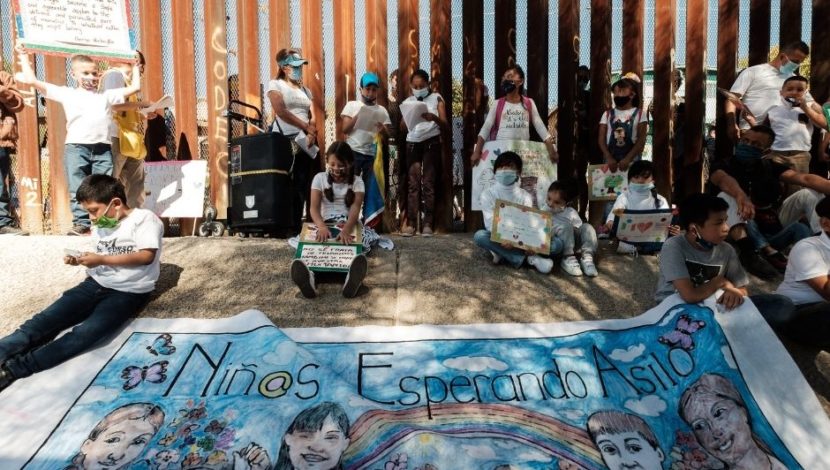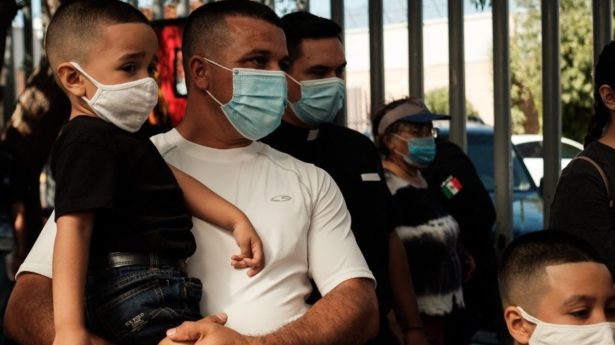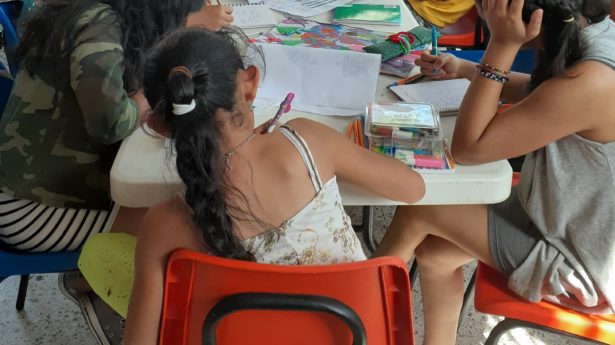The Unitarian Universalist Service Committee advances human rights through grassroots collaborations.
Central American Minors Program Should Be One Piece of a Broader Protection Strategy

By on March 12, 2021
On Wednesday, March 10, the U.S. State Department announced a phased reintroduction of the Central American Minors (CAM) program, an Obama-era initiative to process children’s refugee and humanitarian parole cases from inside the Northern Triangle of Central America. This is a welcome step, but it should not occur in isolation. The Biden administration needs to follow this action by fully restoring asylum processing at the southern U.S. border, including by ending the Trump-era Title 42 order, which they are currently using to summarily expel the “vast majority” of arriving asylum-seeking families and adults to danger.
We certainly applaud the State Department’s early steps toward restarting CAM, following President Biden’s earlier executive order to review the program. While Wednesday’s announcement indicates that only children who filed applications prior to the program’s termination in 2017 will be eligible in the first round, we are grateful to see that the administration intends to “expand the program and accept new applications” in future.
UUSC’s research into CAM in 2016 showed that the program was a life-saving pathway for those who qualified, enabling thousands of children to reunite safely with their families in the United States. The Trump administration’s sudden termination of the program in 2017 was catastrophic—particularly for children who had trusted the U.S. government with their lives and futures, and in some cases put themselves at increased risk in order to apply. Bringing the program back on-line is therefore long overdue.
While the overall news of the program’s return is positive, there are worrying signs that Biden officials may be falling into the same bad habits as the previous Democratic administration. When the original CAM program was created under Obama, officials routinely described it as a “safe, legal, and orderly alternative” to traveling to the U.S. border and presenting one’s claim for asylum, even though this is grossly misleading. Wednesday’s press release repeats the same formula word-for-word, stating “This program provides a safe, legal, and orderly alternative to the risks incurred in the attempt to migrate to the United States irregularly.”
Describing CAM in this way deliberately obscures the fact that seeking asylum at the border is a legal right. Gaining humanitarian protection under asylum, withholding of removal, or similar humanitarian statuses is as much a lawful form of migration as traveling on a work visa or applying through CAM. The administration’s rhetoric also elides the reality that asylum-seeking children often cannot wait, because the dangers they face are too imminent. Many in the population CAM is designed for will not be able to stay in their home countries to complete a lengthy application process. As we wrote in our 2016 report:
In light of the immediate threats to their safety, most children simply cannot afford to remain in-country. One RAICES staff member who has worked with many asylum-seekers in family detention estimated that the maximum amount of time that a child could remain at home after a direct threat would be two weeks. […] The U.S. government must recognize that there will always be refugees and asylum-seekers who need immediate protection. In-country mechanisms can never be a ‘safe and legal alternative’ […] They are, rather, one of several possible paths to safety.
This was all the more true when the program’s original eligibility requirements excluded many children who might otherwise benefit from the program. In particular, the requirement that applicant children needed to have a U.S.-based parent with lawful status left out most nationals from countries that never received a Temporary Protected Status (TPS) designation, such as Guatemala. Our 2016 report concluded that the vast majority of asylum-seeking children arriving at the U.S. border would not have been eligible to apply through CAM even if they had been aware of the program’s existence. As we reported at the time:
Of over 500 recent arrivals surveyed by RAICES, only 15 had ever heard of CAM. Those who had heard of CAM were almost uniformly ineligible (under 1%) under the program criteria […] as most did not have a parent with documented status in the United States or did not know the status of their parents.
The return of the program offers a vital opportunity to improve on these limitations. We applaud the administration’s commitment to develop plans to expand the program in the future, and we hope that they will work to make eligibility requirements less restrictive and onerous in this iteration of the program. Issuing new TPS designations for countries in the region, which was severely impacted in November by Hurricanes Eta and Iota, would also expand the pool of potentially-eligible children, while simultaneously addressing an urgent humanitarian need.
Still worse, the administration continues to block and expel asylum-seekers under Title 42, and they have set no definite timeline for when they will stop doing so. This raises the disturbing possibility that they may try to position CAM as a substitute for standard and much-needed asylum processing at the border.
It is troubling in this regard that they also used the press release as an opportunity to restate that the southern border is “closed.” We urge officials to reintroduce CAM not in isolation from or in opposition to standard asylum procedures, but as one piece of a broader protection strategy. This must include restoring asylum at the border as well, in accordance with longstanding U.S. and international law. In-country processing can never be the appropriate option for all asylum-seekers, due to the nature of the risks they face.
We must urge the administration to make good on their promises to restore humanity to the U.S. immigration system. This includes restarting CAM, but it also means expanding eligibility for the program, improving it in line with our 2016 recommendations, and ending the Title 42 order. CAM should be one plank of a larger administration-wide effort to center the dignity and human rights of people facing persecution. If only reintroduced in isolation, it will save some lives, but the administration’s other policies will continue to put countless others at risk.
***
About UUSC: Guided by the belief that all people have inherent worth and dignity, UUSC advances human rights globally by partnering with affected communities who are confronting injustice, mobilizing to challenge oppressive systems, and inspiring and sustaining spiritually grounded activism for justice. We invite you to join us in this journey toward realizing a better future!
Photo Credit: Kino Border Initiative

